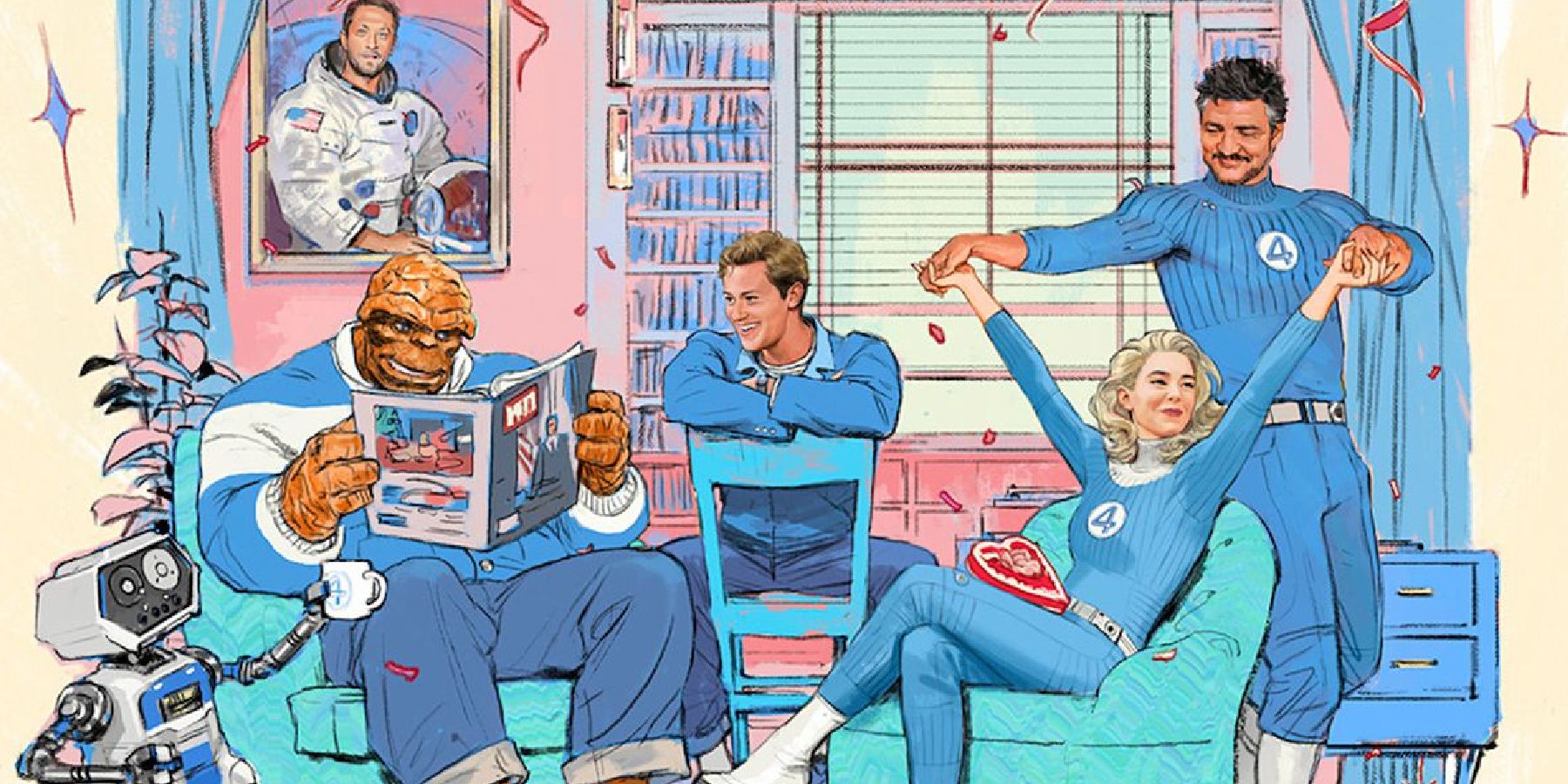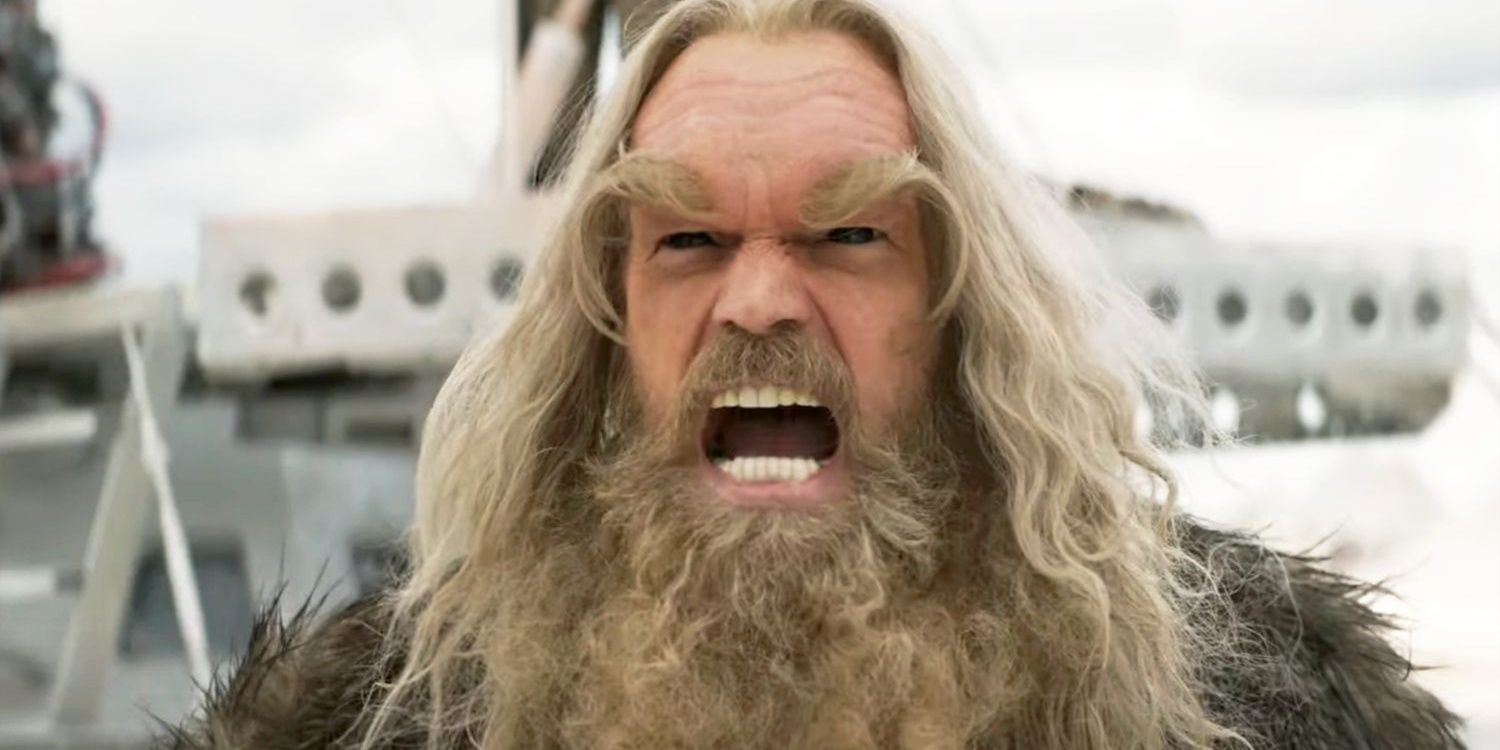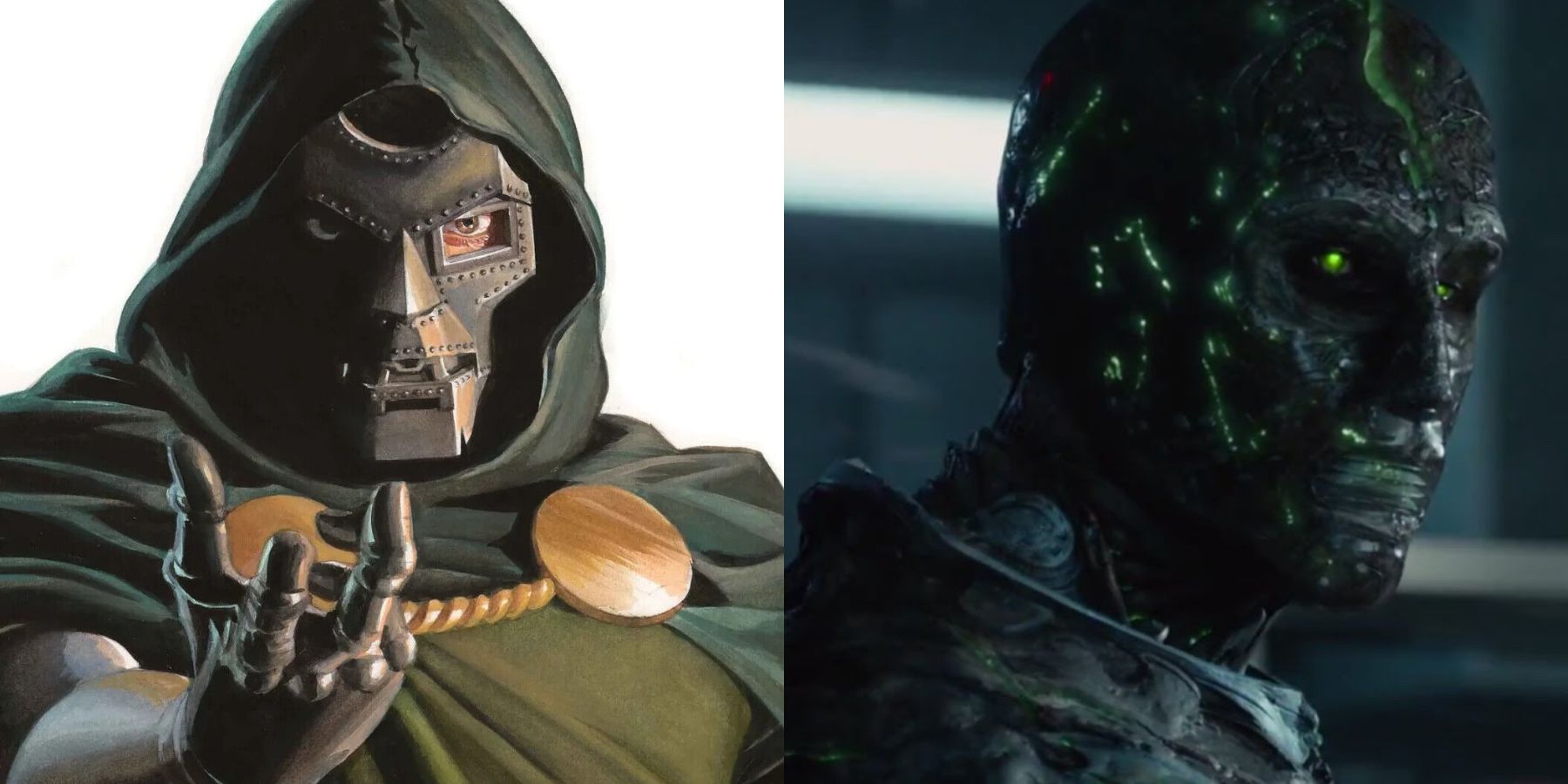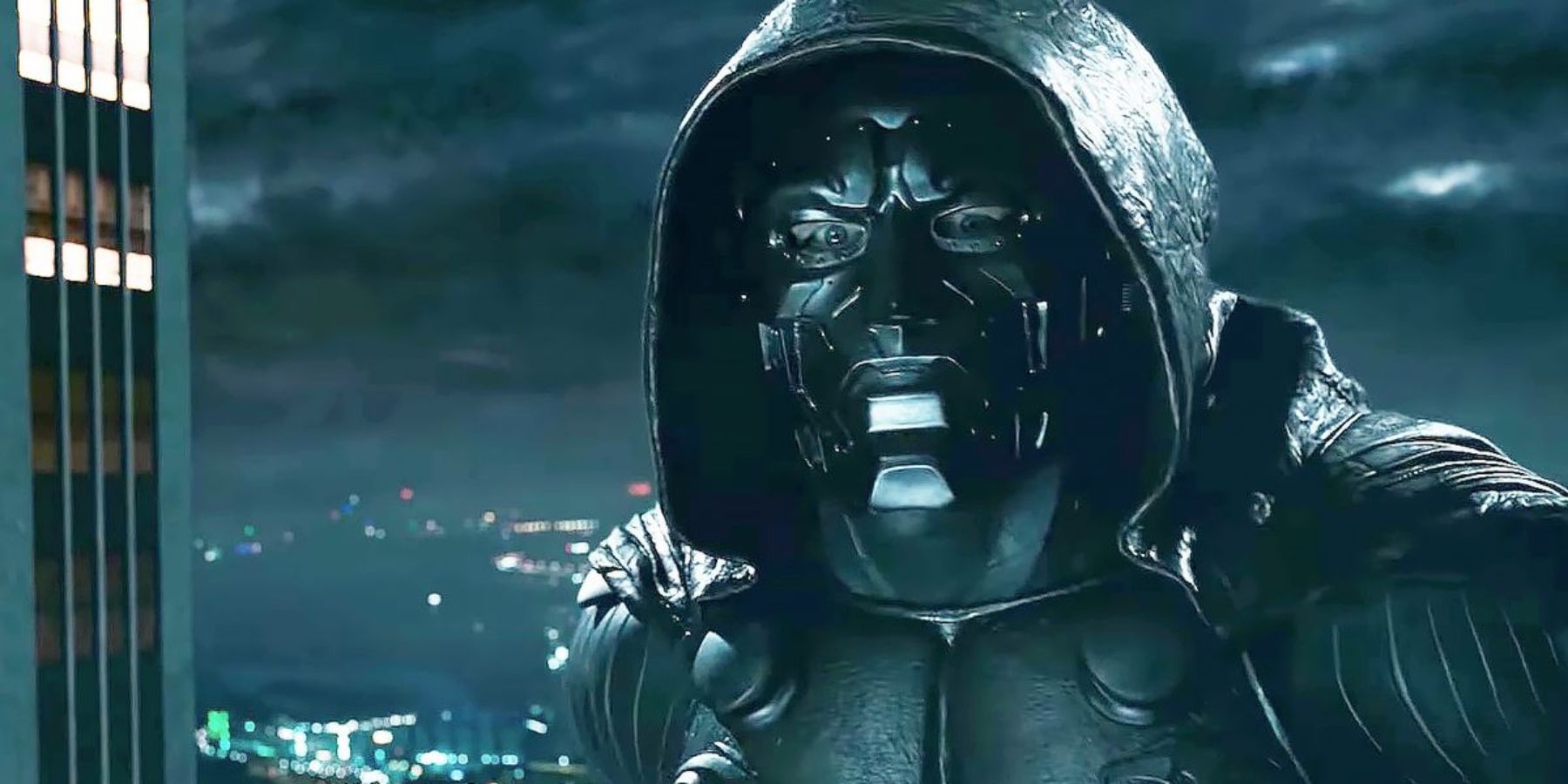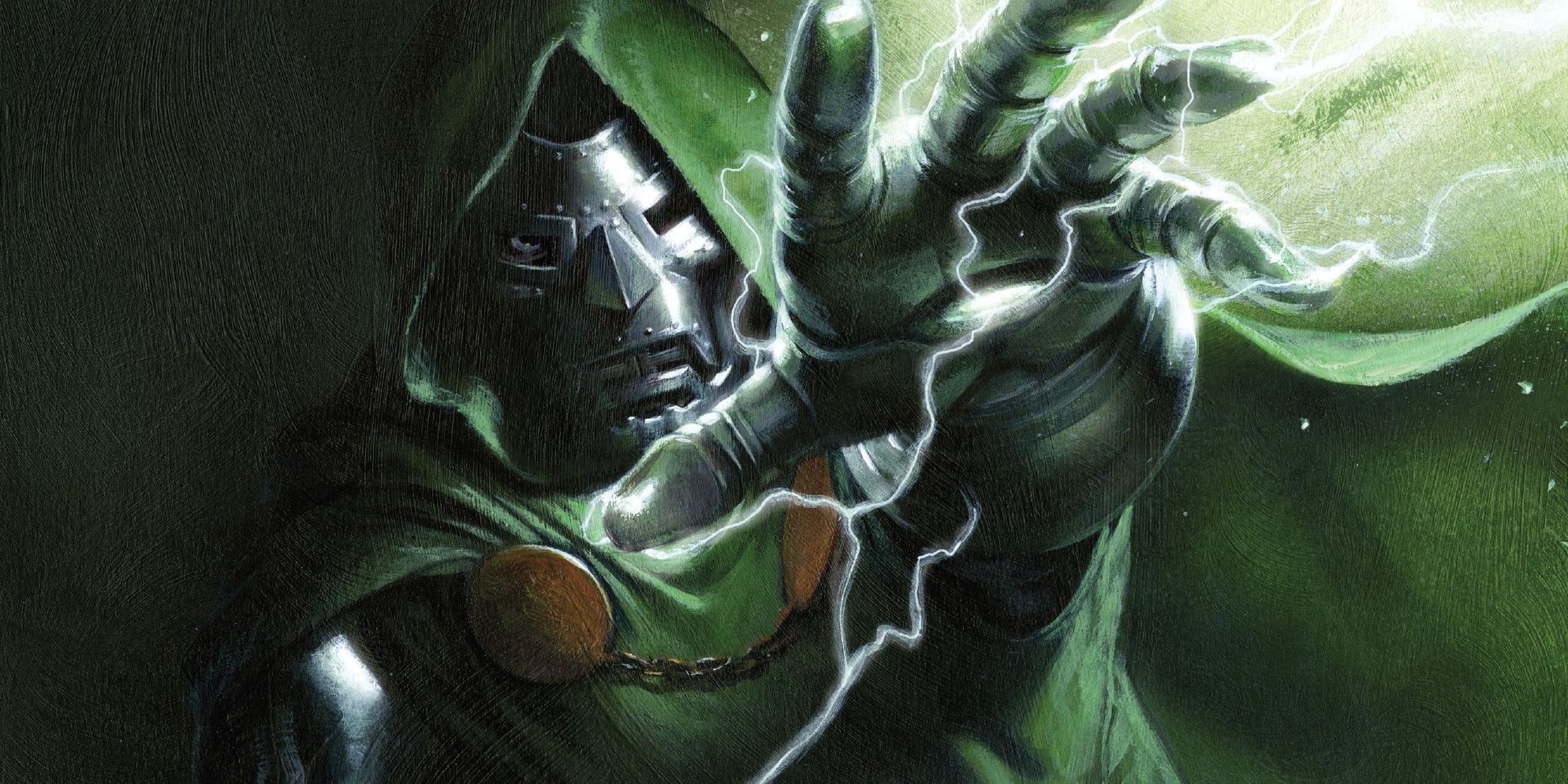Victor von Doom, better known as the malevolent masked monarch Doctor Doom, is perhaps the most popular Marvel Comics supervillain who has yet to appear in the Marvel Cinematic Universe — though his inevitable arrival has been hotly anticipated by fans for years now. But of course, Doom is still no stranger to the big screen, as he’s appeared in every single Fantastic Four film adaptation to date.
However, as any fan of the character can attest, Doom’s past movie appearances haven’t exactly been the most faithful adaptations. And indeed, both the 2005 and 2015 Fantastic Four films feature incarnations of Doctor Doom whose origins are as different from the comics as they are from each other. So in the interest of unraveling the history behind this iconic antagonist, here’s a brief summary of every take on Doctor Doom’s origin story, across both the movies and the comics.
Doctor Doom in the Movies
Victor von Doom made his theatrical debut in the 2005 Fantastic Four film, in which he was played by Julian McMahon. The movie never explores Victor’s backstory, save for a brief mention that he hails from Latveria. Otherwise, all that’s known about him is that he’s a wealthy industrialist CEO who finances Reed Richards’ space expedition — a far cry from the sorcerous despot of the comics. In another departure from the comics, Victor follows Richards and company into space, and is exposed to the same cosmic rays that give the Fantastic Four their powers.
Doom’s famous scars from the comics are reimagined as organic metal slowly covering his face. Meanwhile, his signature lightning blasts are depicted as the result of innate electric powers, not sorcery or high-tech weaponry. After the disastrous space mission, Victor lost funding from his investors, ruining his company and nearly driving him to bankruptcy. Blaming Richards for his troubles, he takes on the identity of “Doctor Doom” and seeks revenge on the Fantastic Four. In the sequel, Rise of the Silver Surfer, Doom returns to steal the power of the Silver Surfer, seemingly for no other reason than his own lust for power.
Doctor Doom’s most recent cinematic appearance thus far is in the 2015 Fantastic Four movie, more infamously known as Fant4stic. The film once again includes Victor as a companion to the FF on the journey that grants them their powers — not to space this time, but rather to a dimension known as “Planet Zero”. Victor seemingly dies on Planet Zero in the accident that grants the heroes their powers, but he later returns, now fused to his spacesuit and possessing telekinetic powers. Doom attempts to destroy Earth and remake it in his own image, but is ultimately killed by the FF.
Noticeably, both film versions of Doctor Doom forgo his trademark power armor from the comics, instead giving him superhuman abilities like those of the Fantastic Four. Meanwhile, the Doom of the source material has never had any innate superpowers, only technology and sorcery. But just as glaringly, all of Doom’s movie appearances have completely omitted any form of backstory for him. His past in Latveria is never explored — he exists solely as an antagonist for the FF, with no real history or goals of his own. However, this is far from the case in the comics.
Doctor Doom in the Comics
In July 1962, Stan Lee and Jack Kirby created Doctor Doom for Fantastic Four #5, immediately setting him up to be the team’s ultimate enemy. When Doom first appears to menace the FF, Mr. Fantastic recalls that Victor was one of his college classmates, infamous for his obsession with the mystic arts. One day, Victor created a machine to contact the Netherworld, only for the device to blow up in his face, permanently scarring him. After being expelled, Victor fled to Tibet to further his research into sorcery, never to be seen again — until now, of course. But while the rest of Doom’s debut issue focuses on his present-day schemes, the gaps in his backstory would be explored in 1964’s Fantastic Four Annual #2, also by Lee and Kirby.
The issue introduces Doom’s homeland, the tiny kingdom of Latveria, nestled between Hungary, Romania, and Serbia. As the story explains, Victor was born into a Romani family under a regime that viciously persecuted his people. Victor’s mother Cynthia was killed when he was an infant, while his father — a kindly physician named Werner von Doom — sacrificed his life to save young Victor from Latverian soldiers. Heartbroken and angry, Victor soon learned that his late mother was a powerful sorceress, discovering mystical artifacts among her belongings. Emboldened by this discovery, Victor became obsessed with mastering both science and sorcery, so that he could one day become powerful enough to avenge his parents’ deaths.
As Victor grew into a young man, he became a Robin Hood-esque folk hero, using his cunning to rob and humiliate the Latverian aristocracy and share their riches with the downtrodden people. Eventually, he got the chance to further his studies abroad at New York’s Empire State University, where he quickly formed a rivalry with Reed Richards. But as explained in his debut issue, Victor left America in disgrace after his failed experiment — which later stories would establish was an attempt to rescue his mother’s soul from the clutches of the demon Mephisto. Then, in Tibet, the scarred Victor concluded his research in sorcery and forged his signature armor. Victor von Doom was dead, and Doctor Doom was born.
Doom returned to Latveria, using his newfound power to lead a revolution against the cruel King Vladimir Fortunov. And though Doom promptly took the throne for himself, the people of Latveria hailed him as a savior for overthrowing the previous regime, and gladly accepted him as their new ruler. But of course, Doom wasn’t satisfied with simply controlling Latveria. Convinced that only his rule can save humanity, Doom sought to spread his vision of peace and order to the entire world. Since then, Doctor Doom has been one of the greatest enemies of the Fantastic Four, the Avengers, and more — not to mention one of the most beloved supervillains in Marvel history.

